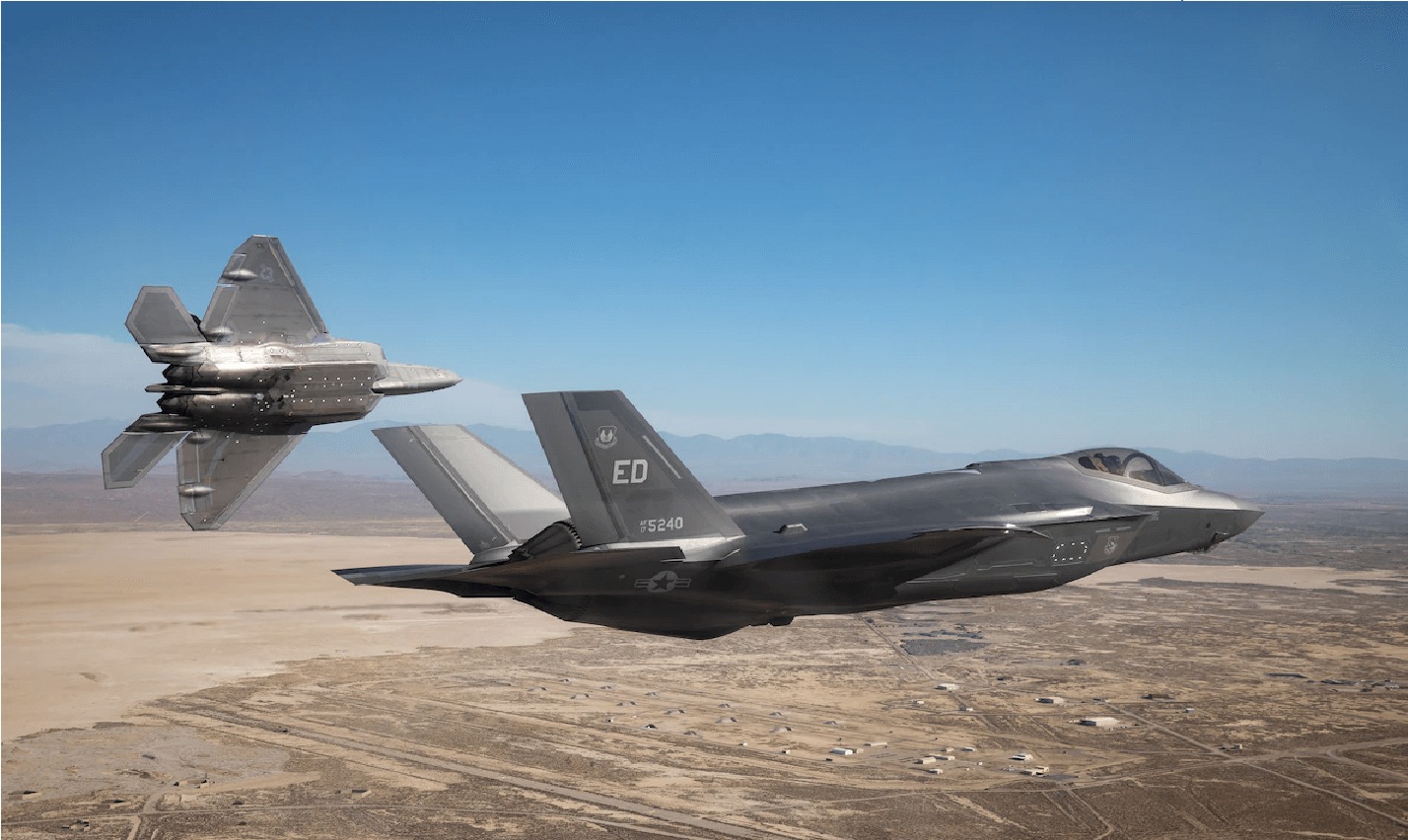The United States Air Force (USAF), including the Air National Guard, remains the world’s largest air force, fielding 2,094 fourth and fifth-generation fighter and close air support (CAS) aircraft. Yet, despite its formidable size, the service is facing a disturbing readiness crisis, with mission-capable rates hitting their lowest levels in over a decade.
According to the latest Government Accountability Office (GAO) review, the USAF’s average mission-capable rate dropped to 67.15% in fiscal year 2024, a decline from 69.92% in 2023 and 71.24% in 2022.
While these figures are non-weighted averages across all fleets, the numbers still highlight a critical issue: fewer aircraft are ready for combat when needed.
Fighter & Bomber Fleets Under Strain
An aircraft is classified as ‘mission capable’ if it can perform at least one of its designated roles. For instance, an F-35A—designed for air superiority, electronic warfare, ground attack, and intelligence gathering—is counted as mission-capable if it can execute any one of these tasks.
The Air Force, however, does not disclose full-mission capability rates, which measure whether an aircraft can perform all its assigned missions.
According to the Air & Space Forces report, the aging F-15C and D fleets saw readiness climb as older airframes were retired, reaching 52.9% and 63.7%, respectively. The new F-15EX, with only eight jets in service, achieved an impressive 83.13% rate.
Meanwhile, Bomber fleets struggled, with the B-1B showing minor improvement in rate but the B-2 and B-52 dipping further, all remaining missions capable of less than half the time.
The stealthy F-22 Raptor suffered the steepest drop, plunging from 52% to 40.19%, despite efforts to phase out its least capable jets—an initiative stalled by Congress until at least 2028.
The F-35A fared slightly better, improving to 51.5%, likely due to improved spare parts availability amid delayed new aircraft deliveries.
Despite its sheer size, the USAF is facing a growing readiness crisis—one that raises serious questions about its ability to meet operational demands in an era of rising global threats.
A Call For ‘More Air Force’
Amid these challenges, USAF Chief of Staff General David Allvin has sounded the alarm, urging for “More Air Force.”
Speaking at the Airpower Futures Forum, Allvin acknowledged the strain on the force, emphasizing that it remains stretched thin. “The force is stressed. And we’re still doing our very damn best,” he stated.
His call for increased funding and modernization comes as China releases footage of two new sixth-generation aircraft, reinforcing the urgency of maintaining American air dominance.
“More Air Force means backstopping all these elements with a nuclear force that is modernized to surpass the rapid growth of the PRC’s nuclear arsenal and the reconstitution of Russia’s vast nuclear arms,” Alvin emphasized.
U.S. Defense Budget
The Biden administration’s FY 2025 defense budget request, unveiled on March 11, 2024, seeks $7.5 trillion for the Department of Defense (DoD). The Air Force is allocated $188.1 billion—up 1.7% from FY 2024—with $75.6 billion dedicated to operations and maintenance.
Modernization remains a priority, with $37.7 billion earmarked for Research, Development, Test, and Evaluation (RDT&E). Key initiatives include nuclear enterprise upgrades such as the B-21 Raider, Sentinel ICBM, Long-Range Standoff (LRSO) weapon, and the Survivable Airborne Operations Center (SAOC).
Procurement spending stands at $29 billion, covering next-gen platforms like the F-35A, F-15EX, KC-46A tanker, and T-7A advanced trainer. Investments also extend to precision-guided weapons, including the Joint Air-to-Surface Standoff Missile – Extended Range (JASSM-ER), Long-Range Anti-Ship Missile (LRASM), and Advanced Anti-Radiation Guided Missile Extended Range (AARGM-ER).
However, financial constraints loom large. The Fiscal Responsibility Act caps defense budget growth at 1% annually in FY 2025, with potential spending limits extending through 2029—a challenge that could significantly impact future military funding and priorities.

China’s Airpower Surge: A Growing Threat
General Allvin has also raised concerns over China’s rapid advancements in airpower. “The PRC has built a first-rate Air Force with realistic training programs that rival our own,” he stated in an interview with Breaking Defense.
“The fact that these advances are rooted in stolen intellectual property from our industrial base—and, at times, aided by Western-trained pilots-for-hire—indicates that we still hold a critical edge. But to sustain this advantage, we must invest in it,” he added.
The USAF’s recent report, ‘Department of the Air Force in 2050’, warns that global competition between the US, China, and Russia will only intensify.
The rapid modernization of China’s Air Force has taken the US by surprise. China’s next-generation fighter jets and drones have seen significant improvements in both quality and quantity, posing a growing challenge to US air dominance.
The report signals that the Chinese PLA Air Force is the primary concern for the future of American airpower.
Conclusion
The USAF’s aircraft inventory is currently the smallest it has ever been. At the same time, nuclear modernization efforts are straining budgets, jeopardizing key future programs.
Among them is the crewed fighter of the Next-Generation Air Dominance (NGAD) program, which remains in limbo and could face cutbacks to control costs when China and Russia advance their own next-generation capabilities.
The USAF finds itself at a crossroads. With declining readiness rates, budget constraints, and rising adversary capabilities, the service faces a formidable challenge in maintaining its edge.
The coming years will be crucial in determining whether the US Air Force can reverse this trend and sustain its position as the world’s premier airpower force.
- Shubhangi Palve is a defense and aerospace journalist. Before joining the EurAsian Times, she worked for ET Prime. She has over 15 years of extensive experience in the media industry, spanning print, electronic, and online domains.
- Contact the author at shubhapalve (at) gmail.com




